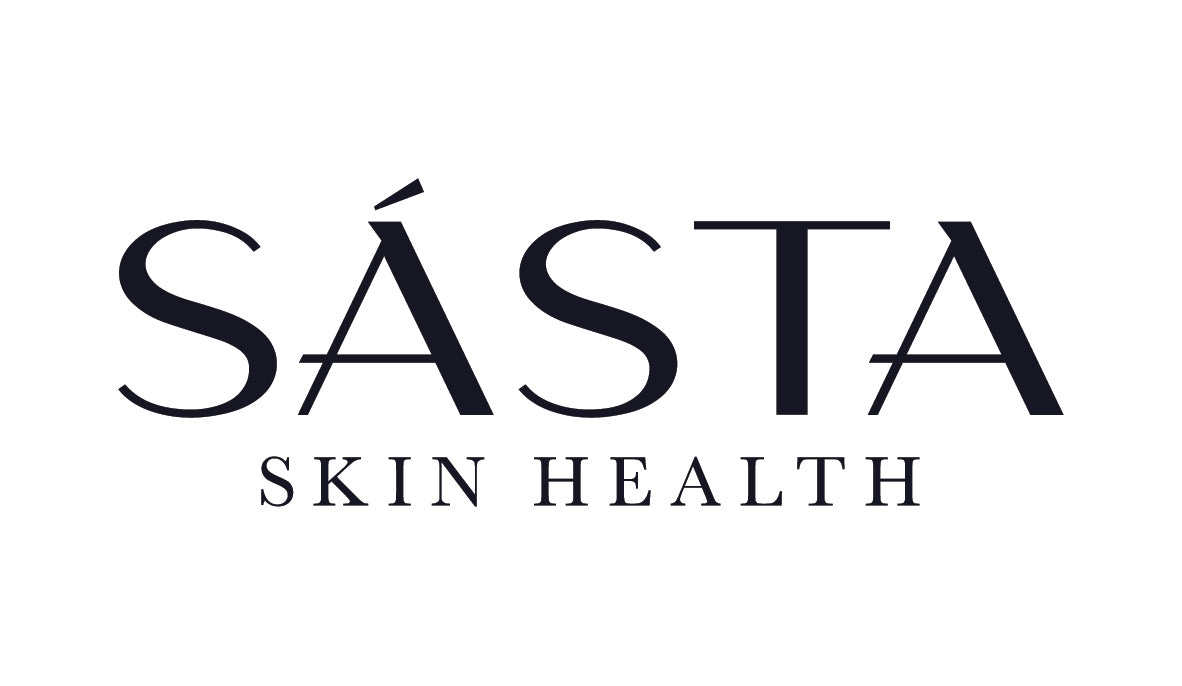The skin is the body's very first line of defence to the world and its aggravating molecules. It does this both as a physical waterproof barrier, but also through its microbiome.
Our skin is home to millions of microorganisms and this microbiota varies on different parts of our bodies, as some bacteria like an oily or moist environment and others a dryer skin climate. It is a complex system, and harmony is paramount to the skins health. It is when dysbiosis of the skin's microbiome occurs that we may see skin conditions either appear initially or worsen. Conditions such as, however not limited to acne, atopic dermatitis, pigmentation, and redness and sensitivity
Acne
Acne is a skin condition that can be loosely categorised into 4 stages.
Grade 1 (mild): mostly confined to whiteheads and blackheads, with a few papules and pustules
Grade 2 (moderate, or pustular acne): multiple papules and pustules, mostly confined to the face.
Grade 3 (moderately severe; nodulocystic acne): numerous papules and pustules; the occasional inflamed nodule; the back and the chest may also be affected.
Grade 4 (severe nodulocystic acne): numerous large, painful pustules and nodules; inflammation.
One of the contributing factors of acne is Impaired Barrier function(when the skin's natural barrier has been disturbed) When this barrier including its microbiome are impaired the Cultibacterium Acnes doesn't have the food source it likes on the surface it will heads down into the pilo-sebaceous unit(pore) for more yummy triglycerides (found in sebum).
A by-product of this process of converting triglycerides is the production of free fatty acids, which are considered by the immune response as foreign bodies, therefore inflammation is triggered as the immune system responds.
Should your microbiome be disturbed, the levels of good and bad bacteria will be out of sync and the Culti Bacterium will be at a problematic level. The use of pre and post biotics in a topical application are your best bet at maintaining your microbiome and optimising your skin's ability to maintain health. It's also worth noting that a lot of acne treatments and products include ingredients which are harmful to the microbiome. So, if you are using an acne targeting routine, adding in the Sásta Skin Supplement serum is a way to counteract negative effects of products that may be on the strong side. If you can manage to reduce negative effects, you are more likely to be able to maintain your acne treatments, therefore treating the problem, and reducing further problems down the line.
Atopic Dermatitis
The skin’s microbiome has a role to play in the development of AD in infants, however as we get older, a microbiome that is lacking diversity plays a role in the severity of the condition. Several lines of evidence suggest that maintaining microbial diversity is advantageous to supporting the skin's immune system, and as AD is an autoimmune condition, using a microbiome supporting product is a way of helping to support the skin and therefore help treat the condition. A healthy microbiome is also going to help the skin, which may be vulnerable due to an AD flare, protect itself from pathogens and therefore help to prevent infection. Microbiome diversity is a way to encourage acceptable levels of the S aureus bacteria, a bacteria that is found in large quantities on a majority of AD sufferers.
Another reason to aim for a healthy and diverse microbiome for atopic dermatitis sufferers is that it aids in the regeneration of skin cells and therefore the repair of the outer layer of the skin, the epidermis. All sufferers of AD need to repair and replenish their epidermis as it will be damaged from a flare of AD. Antiseptic treatment has long been used in the treatment of AD, however through recent findings we are beginning to understand that targeting the health of the microbiome will in fact benefit the healing rate of AD. Using pre and biotic ingredients will aid the balance of the biome, without applying live probiotics to the skin.
Pigmentation
The scourge of abnormal pigmentation. Hard to abide and hard to treat. Prevention is key, wear that SPF lads, whether it is Halloween, Christmas day or the 4th of July, get it on your face!!
Hypo and Hyperpigmentation have many known causes, ultraviolet radiation (UVR from now on), hormonal shifts, trauma and free radical damage. It appears in many different ways and different shades. A good baseline for distinguishing what kind of pigmentation you have is the following:
Hormonal pigmentation is usually central facial.
Sun damage is on the outer face near the hair.
Trauma and post-inflammatory hyperpigmentation is irregular in shape and can be found anywhere, and hypo pigmentation is also irregular in shape and can be found anywhere.
The melanocyte cell is responsible for the production of Melanosomes, which are melanin granules. Melanocytes have dendritic arms, and these arms are the delivery system for the melanosomes to the Keratinocyte. Melanocytes are triggered into producing melanin by exposure to UVR light. Each Melanocyte services 30-36 Keratinocytes, so that group of cells will reflect the behaviour of that Melanocyte. If the melanocyte has been damaged it may start shooting out too much melanin (hyper), or stop producing it altogether (Hypo).
Melanocytes never differ in number from race to race, however the amount of melanosomes and the quality of the melanin is different. The melanin granule is partially responsible for the colour of skin and hair (other contributing factors are haemoglobin, lutein, beta-carotene). The enzyme Tyrosinase plays a key role in melanin synthesis as it is a catalyst to its formation Within the Melanocyte cell, tyrosine is converted into melanin in the presence of tyrosinase (this is an extremely complex chemical action that I won't dare go into right now). Tyrosinase needs an oxidising atmosphere to work and so antioxidant ingredients to the rescue. If you block tyrosinase, you block Melanogenesis.
So where does the microbiome come in? A healthy and supported skin microbiome will aid in the skin's defence against the number 1 cause of abnormal pigmentation, which is UVR. Applying a topical pre and post biotic serum has therapeutic benefits to mitigate the damaging effects of UVR, which includes abnormal pigmentation. Essentially, our bodies know how to help, but a microbiome that is as diverse as it is robust will aid in this healing and help to prevent further damage.
Redness and Sensitivity
The curse of the celts, the bane of many a client of mine's skin life. So many people cite redness as a concern when filling out my pre consultation questionnaires. When it comes to sensitivity we are a sensitive bunch over all, and with sensitivity comes the redness, so I talk about them together here.
Redness can be caused by ‘high’ colour, this is essentially a lot of vascular activity behind the skin, which is visible on the service. Hard to treat, as with large pores, it's essentially just your skin and how it is (soz). Maintaining a healthy epidermis, using products that enhance repair and regeneration like Sásta microbiome boosting serum can improve it over time, as part of a healthy overall lifestyle and good overall skin routine.
Redness due to sensitive or sensitised skin is different. Firstly, the difference between sensitive and sensitised skin, is that if your skin is sensitive, it probably always has been and responds negatively to products or environmental factors often.
Sensitised skin is skin that has been made to appear sensitive due to over use of retinoids, exfoliating acids, a once off allergic reaction, even taking up a new sport or activity that involves exposure that you are not acclimated to can cause it. You treat sensitive and sensitised and the subsequent redness the same. But in sensitised skin you just remove the aggressor from your life also.
It all comes down to the skin's barrier once again and its ability to protect, this protective ability being aided by the microbes that live on the surface. If your barrier is intact, aggressors like pollutants or pollen cannot access the delicate skin cells underneath. But if the barrier has been compromised, you will be more susceptible to irritation. Ectoin, a post biotic ingredient especially targets redness, itchiness and skin irritation, as well as supporting the skin's ability to protect itself from external aggressors.
Honestly everyone with sensitive or red skin needs the Sásta Microbiome serum in their routine. It supports and helps to treat the other conditions associated with sensitivity such as dehydration and dryness. Also if you are someone with an extensive routine that includes retinoids, acids, and potent vitamin C applications as well as some in salon treatments, this serum will be something that will support the skin throughout your skincare journey, enhancing efficacy and longevity of use.
To conclude this wordy/science heavy blog post, I'm hard pressed to find a skin condition that is not affected by the health of the skin microbiome, as the skin microbiome's health is itself an indicator of the over health of the skin. So whether you are concerned with seeing the lines of time, acne breakouts, psoriasis, or redness and sensitivity, or you have just gone overboard with strong skincare, applying the Sásta Microbiome serum, on clean skin morning and evening, alone or before any other products will aid in your skin's ability to heal, defend and regenerate itself. So it's a no brainer really and can be added into any routine, or used as a standalone treatment. Its your supportive skincare bestie.
Grainne Callaghan


